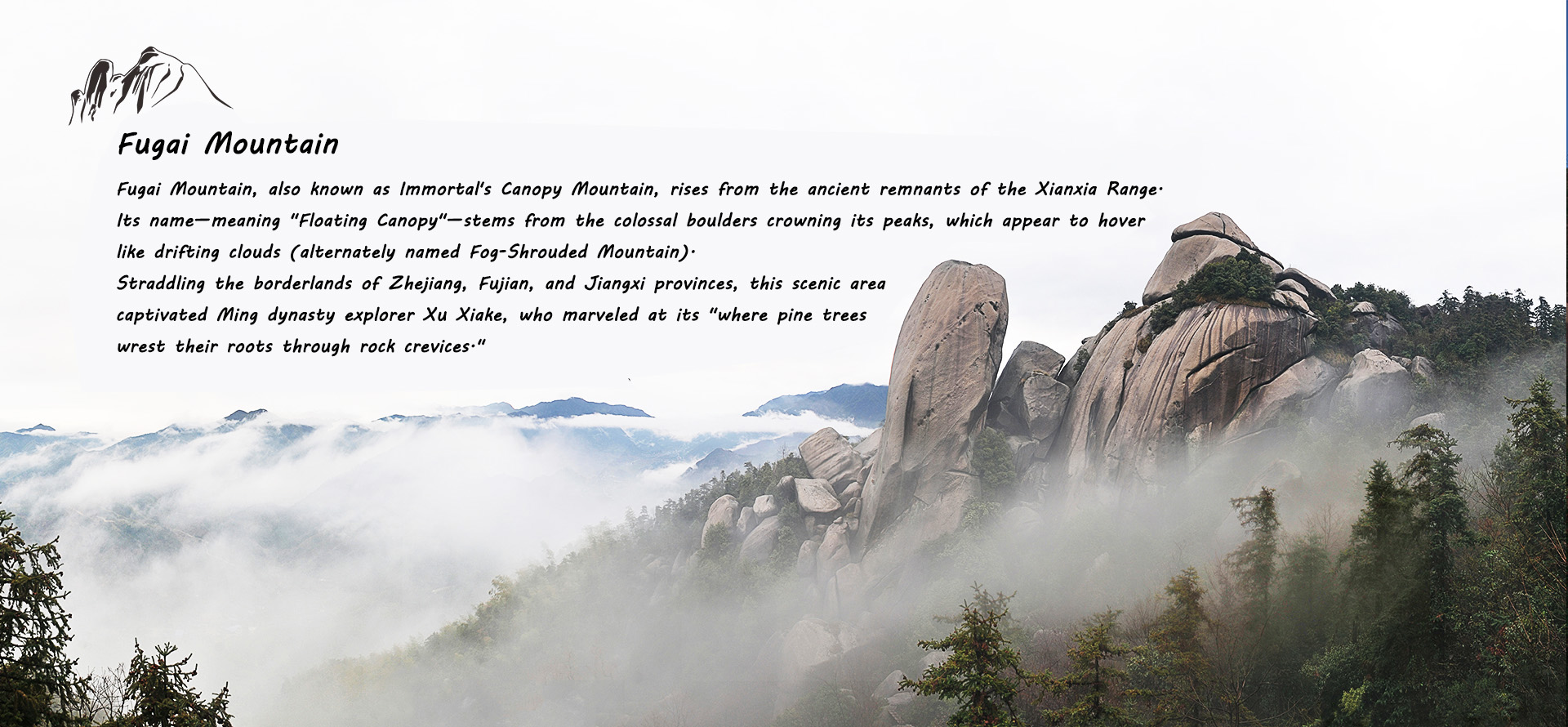Fugai Mountain, also known as Guxian Mountain, is a National AAAA-level scenic area located at the junction of Zhejiang, Fujian, and Jiangxi provinces. Situated in the southern part of Nianbadu Town, Jiangshan City, Zhejiang Province, and northeast of Miaowan Village, Panting Township, Pucheng County, Fujian Province, it is accessible from both Zhejiang and Fujian sides within the ancient Xianxia Mountain range.
Its name originates from the massive floating stone formations crowning the summit, creating a dynamic illusion of movement, hence the names "Floating Canopy Mountain" or "Mist Canopy Mountain."
Noted Ming Dynasty (14th-17th century) geographer Xu Xiake documented his exploration here in Travel Diaries of Fujian (Later), marveling at its "cloud-piercing boulders and cliff-carving mists." He described the landscape as "an extraordinary chessboard of colossal stones interspersed with tenacious pines... where grotesque rock formations resemble mythical demons."
Characterized by granite geological formations, Fugai Mountain's distinctive features include spectacular peaks, whimsical rock shapes, numerous caves, and ancient temples, creating a landscape of remarkable geological diversity.









